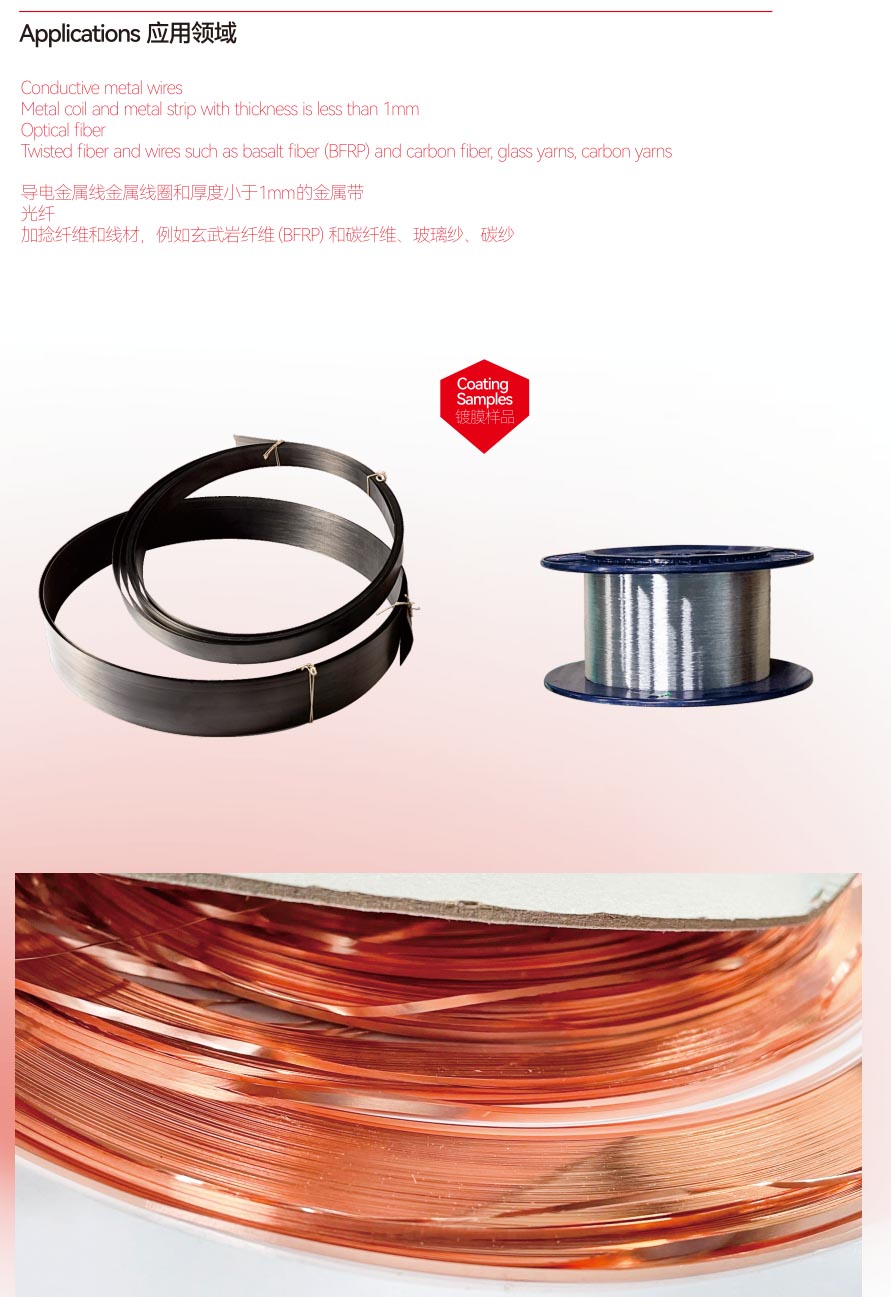Physical Vapor Deposition (PVD) magnetron sputtering deposition is a thin film deposition technique used in various industries such as electronics, optics, and semiconductor manufacturing. In PVD magnetron sputtering, a vacuum chamber is used to create a low-pressure environment. Inside this chamber, a target material (the material to be deposited as a thin film) and a substrate (the material onto which the thin film is deposited) are placed.
What is a PVD magnetron sputtering coating machine?
A Magnetron Sputtering Deposition Machine is a type of Physical Vapor Deposition (PVD) equipment used in the thin film deposition process. Here's an overview of the machine and its operation:
Magnetron Sputtering Deposition Machine:
Principle: Magnetron sputtering is a physical vapor deposition technique where material from a target is ejected onto a substrate to create a thin film coating. In this process, a plasma is formed in a vacuum chamber, and ions from the plasma bombard the target material, causing atoms to be ejected and deposited onto the substrate.
Components:
Vacuum Chamber: The machine consists of a vacuum chamber where the sputtering process takes place under controlled pressure conditions.
Target Material: The material to be deposited (e.g., metal or alloy) is placed as a target inside the chamber.
Substrate Holder: The substrate to be coated is positioned facing the target material.
Magnetron Sputtering cathode: A magnetron source is used to create a magnetic field that enhances the sputtering process, increasing the efficiency of material deposition.
Operation:
Sputtering: Gas ions (typically argon) are introduced into the chamber, creating a plasma discharge. The ions strike the target material, dislodging atoms or molecules.
Deposition: The ejected material from the target condenses on the substrate, forming a thin film coating.
Control Parameters: Parameters such as gas pressure, power supply voltage, and deposition time are controlled to achieve the desired film thickness, composition, and properties.
What is the general sputtering deposition process?
Sputtering: In the sputtering process, a high-voltage electrical field is applied across the target material (often a metal) causing the atoms of the target material to be ejected from its surface. These atoms travel in straight lines and deposit onto the substrate.
Magnetron: A magnetron is a device that enhances the efficiency of sputtering by confining electrons near the target surface. This leads to a more effective transfer of momentum to the target atoms, resulting in a higher deposition rate.
Deposition: The atoms ejected from the target material form a thin film on the substrate. The properties of the thin film (such as thickness, composition, and structure) can be controlled by adjusting parameters such as the target material, power input, gas composition, and chamber pressure.
Applications:
Semiconductor Industry: Used for coating semiconductor wafers with thin films for electronic devices.
Optics: Depositing anti-reflective coatings, mirrors, and optical filters.
Solar Cells: Coating photovoltaic cells with thin films to enhance efficiency.
Tool and Wear Protection: Coating cutting tools and components with wear-resistant films.
Conclusion:
Magnetron sputtering deposition machines play a crucial role in the production of thin film coatings for various applications in industries such as electronics, optics, and renewable energy. By offering precise control over the deposition process and producing high-quality coatings, these machines are essential tools for achieving desired material properties and performance characteristics in thin film applications.
1. Advantages:
Uniform Coating: Magnetron sputtering provides a highly uniform coating over large areas, making it suitable for industrial-scale production.
Controlled Deposition: The process allows precise control over the thickness, composition, and microstructure of the deposited film.
Wide Material Compatibility: Magnetron sputtering can deposit a variety of materials, including metals, oxides, nitrides, and more.
2. DC, MF, and RF sputtering are different variants of the sputtering technique used for thin film deposition in various industries. Here's a brief overview of each:
2.1 DC Sputtering (Direct Current Sputtering):
In DC sputtering, a direct current power source is used to create a glow discharge between the target material and the substrate.
This technique is relatively simple and cost-effective.
DC sputtering is suitable for depositing conductive materials like metals.
However, it can lead to some issues like arcing and uneven film deposition.
2.2 MF Sputtering (Mid-Frequency Sputtering):
MF sputtering, also known as Medium Frequency Sputtering, involves using a medium frequency power source (typically in the range of 40 kHz to 1 MHz).
MF sputtering is known for its ability to deposit high-quality films with better control over properties like film density and adhesion.
It can be used for depositing a wide range of materials, including metals, oxides, and nitrides.
MF sputtering offers improved film uniformity compared to DC sputtering.
2.3 RF Sputtering (Radio Frequency Sputtering):
RF sputtering involves using a radio frequency power source (typically in the range of 10 MHz to 100 MHz) to generate the plasma within the sputtering chamber.
RF sputtering is widely used for depositing dielectric materials and insulators.
The high-frequency RF power leads to a more stable plasma, which can result in better film quality and uniformity.
RF sputtering is suitable for materials that require a high-quality, low-defect thin film.
Each of these sputtering techniques has its advantages and is chosen based on the specific requirements of the thin film being deposited. Factors such as the type of material, desired film properties, and deposition conditions play a crucial role in selecting the appropriate sputtering method for a given application.
In physical vapor deposition (PVD) processes like sputtering, the design of the cathode plays a critical role in determining the efficiency and quality of thin film deposition. Planar sputtering cathodes and cylinder sputtering cathodes are two common cathode designs used in sputtering systems. Here's a comparison between the two:
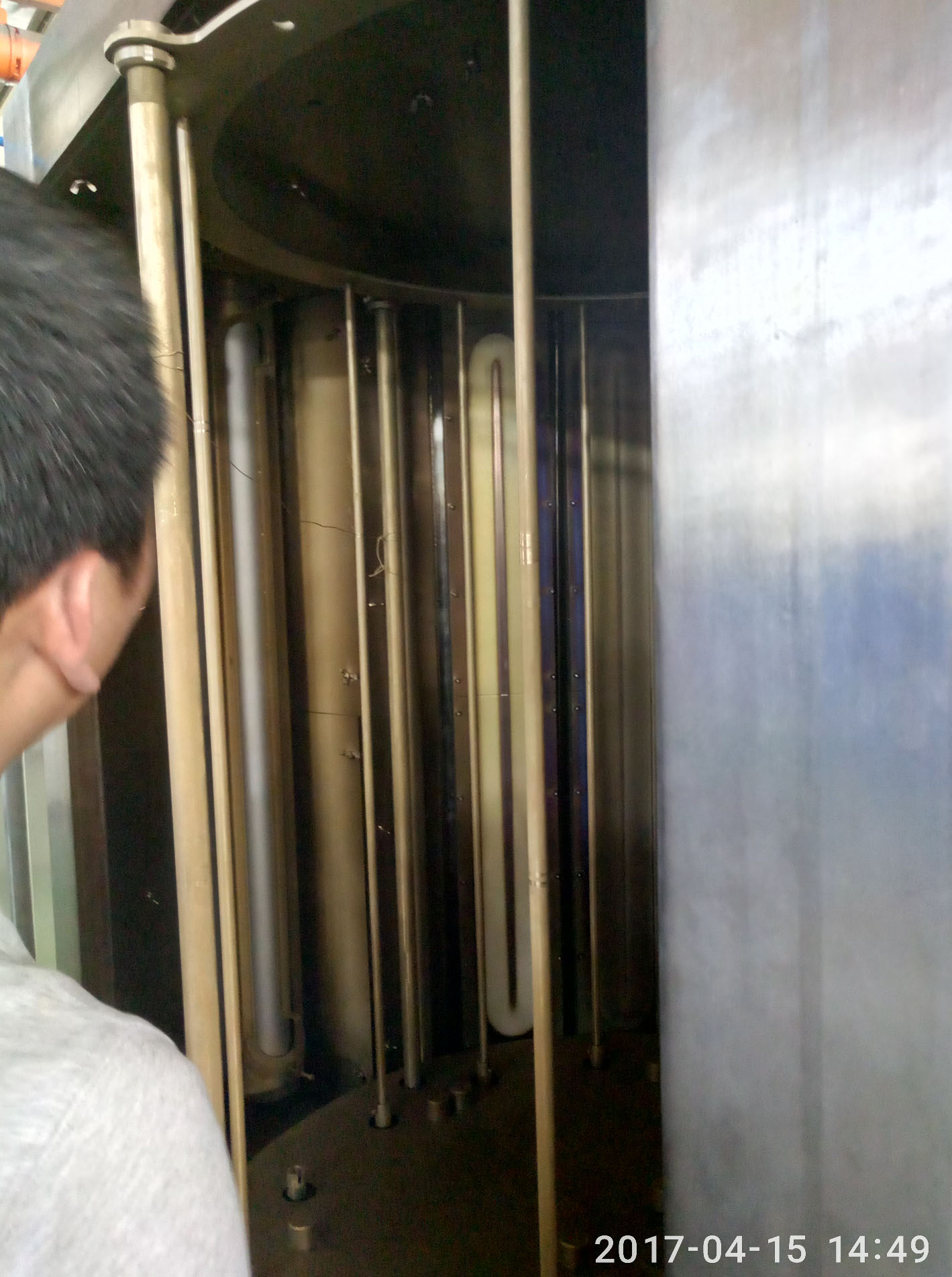
1 Planar Sputtering Cathodes:
1.1 Design: Planar sputtering cathodes have a flat, rectangular target surface that faces the substrate.
1.2 Advantages:
Uniformity: Provides good film uniformity over relatively large substrate areas.
Ease of Use: Straightforward design and easy target replacement.
Versatility: Suitable for a wide range of applications and materials.
1.3 Applications:
Planar sputtering cathodes are commonly used in industries like electronics, optics, and thin film coatings.
2. Cylinder Sputtering Cathodes:
2.1 Design: Cylinder sputtering cathodes have a cylindrical target surface that surrounds the substrate.
2.2 Advantages:
High Deposition Rates: Can achieve higher deposition rates compared to planar cathodes due to increased target surface area.
Directional Control: Allows for better control over film properties like thickness and composition.
Efficiency: Can be more efficient for specific applications.
2.3 Applications: Cylinder sputtering cathodes are often used in industries where high deposition rates and directional control are important, such as in the production of optical coatings and architectural glass.
3.Comparison:
3.1 Deposition Rate: Cylinder cathodes generally offer higher deposition rates due to their larger target surface area.
3.2 Film Uniformity: Planar cathodes are better suited for achieving uniform films over larger areas.
3.3 Control: Cylinder cathodes provide better directional control over film properties due to their geometry.
3.4 Versatility: Planar cathodes are more versatile and commonly used in a wide range of applications.
The choice between planar and cylinder sputtering cathodes depends on factors like the specific application requirements, desired film properties, deposition rates, and overall system design. Each cathode design has its strengths and is selected based on the unique needs of the thin film deposition process.
The magnetron sputtering coating machines are available from Royal Tech.
1. Batch magnetron sputtering system
A batch magnetron sputtering system is a configuration of sputtering equipment designed to deposit thin films on multiple substrates simultaneously in a batch process. This type of system is commonly used in industrial settings where high throughput and efficiency are required.
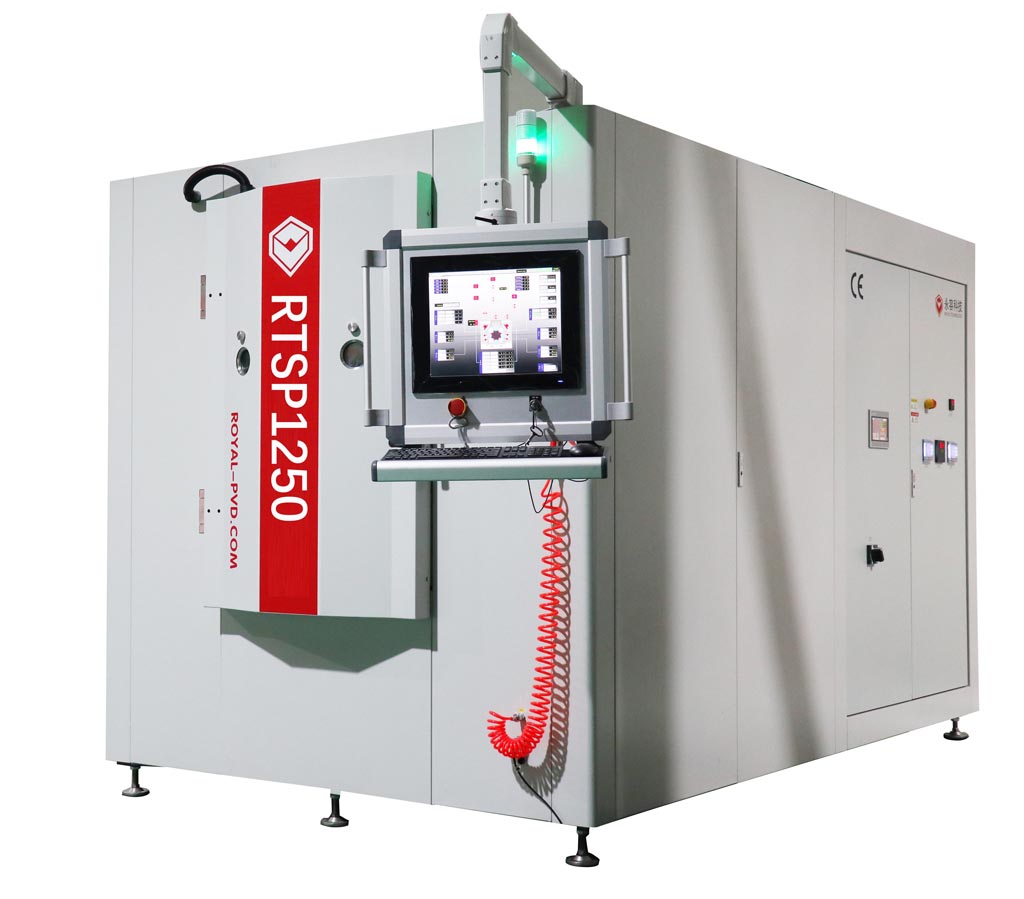
Here are some key features and advantages of a batch magnetron sputtering system:
1.1 Features:
Multiple Cathodes: A batch system typically includes multiple magnetron cathodes arranged in a way that allows deposition on several substrates at once.
Rotating Substrate Holder: The system may have a rotating substrate holder to ensure uniform deposition on all substrates and to maximize the use of the available deposition area.
Uniformity Control: Mechanisms are in place to maintain uniform film thickness and properties across all substrates in the batch.
Process Automation: Batch systems often come with automation features for loading and unloading substrates, controlling deposition parameters, and monitoring the process.
High Throughput: By processing multiple substrates simultaneously, batch systems offer higher throughput compared to single-substrate systems.
Customization: Batch systems can be customized to accommodate different substrate sizes and shapes, as well as varying deposition requirements.
1.2 Advantages
Efficiency: Batch processing allows for increased efficiency by depositing films on multiple substrates in a single run, reducing overall processing time.
Cost-Effectiveness: The high throughput of batch systems can lead to cost savings in terms of labor and energy consumption per substrate.
Consistency: By processing substrates in a batch, the system helps ensure consistency in film properties across all substrates.
Scalability: Batch systems can be scaled up to accommodate larger production volumes without significant changes to the overall process.
Versatility: These systems can be adapted for a wide range of applications in industries such as electronics, optics, and coatings.
Batch magnetron sputtering systems are particularly useful in industries where large-scale production of thin films is required, offering a balance between efficiency, throughput, and quality control. The ability to process multiple substrates simultaneously makes these systems well-suited for mass production and high-volume manufacturing environments.
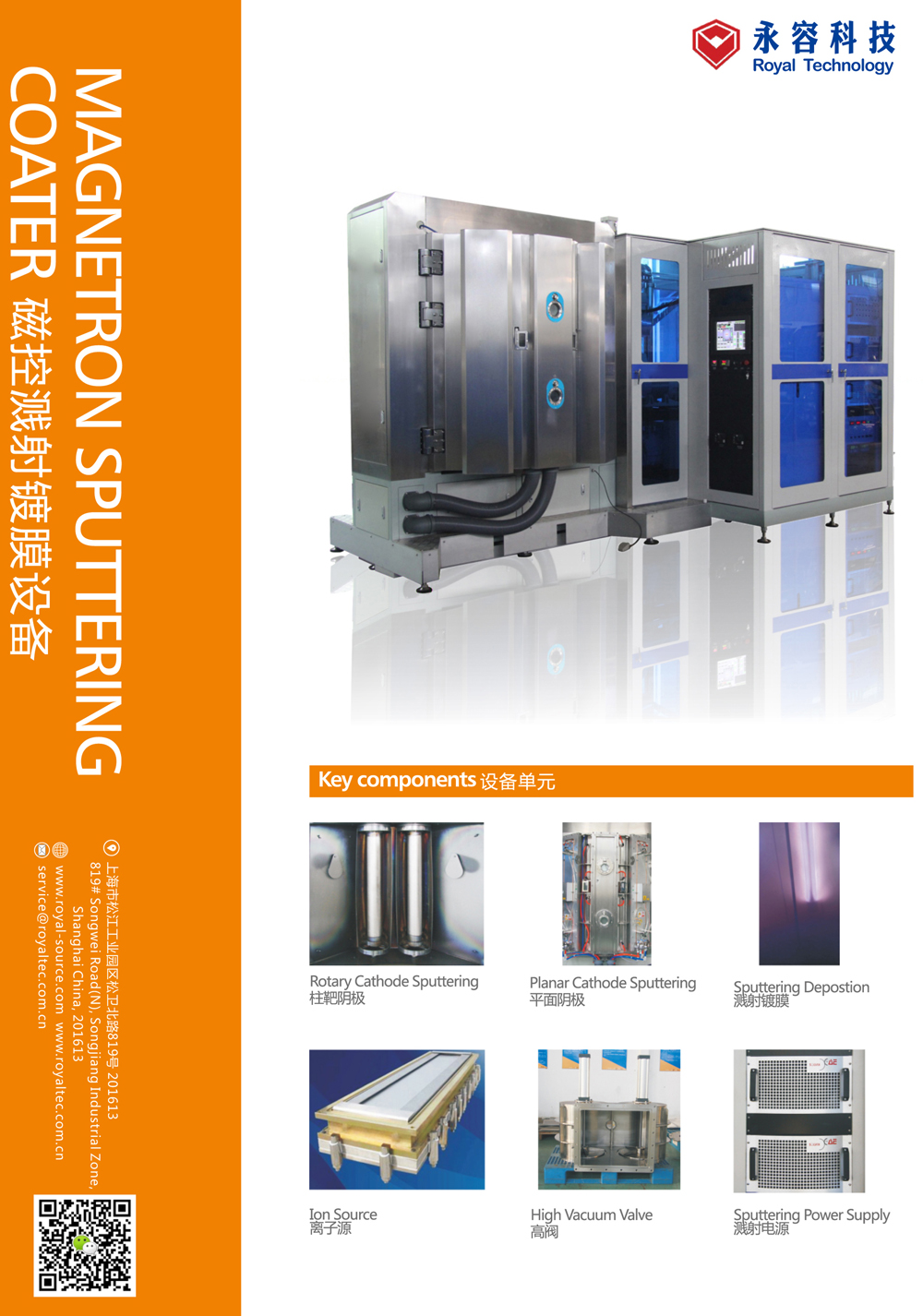
Batch System- E-catalogue-DOWNLOAD
2. Roll to Roll magnetron sputtering system
A Roll-to-Roll (R2R) magnetron sputtering system is a specialized configuration of sputtering equipment designed for continuous thin film deposition on flexible substrates that are fed from a roll and processed in a continuous manner. This technology is commonly used in industries such as flexible electronics, packaging, solar cells, and displays.

Here are some key features and advantages of a Roll-to-Roll magnetron sputtering system:
2.1 Features
Continuous Processing:
Substrates are fed from a roll into the sputtering chamber in a continuous manner, allowing for uninterrupted deposition on a moving substrate.
Multiple Magnetron Cathodes:
These systems typically incorporate multiple magnetron cathodes to deposit different materials or create multilayer structures on the moving substrate.
Roll Handling Mechanisms:
Systems include mechanisms for handling and guiding the substrate rolls through the deposition process, ensuring precise control over the coating.
Uniformity Control:
Methods such as in-situ monitoring and control systems are employed to maintain uniform film properties across the entire length of the substrate.
High Throughput:
R2R systems offer high throughput production capabilities, making them suitable for mass production of flexible electronics and other applications.
Scalability:
The system can be scaled up to accommodate larger substrate widths and higher production volumes.
2.2 Advantages
High Efficiency:
Continuous processing leads to high efficiency and productivity compared to batch processing systems.
Flexibility:
These systems can handle a variety of flexible substrates, including plastic films, foils, and papers.
Reduced Cost: R2R systems can lead to cost savings by minimizing material waste and labor requirements.
Versatility:
Suitable for depositing a wide range of materials on flexible substrates, enabling diverse applications in industries such as flexible electronics and packaging.
Improved Quality Control:
Continuous monitoring and control systems help ensure consistent film properties and quality throughout the production process.
Roll-to-Roll magnetron sputtering systems are ideal for applications that require high-volume production of uniform thin films on flexible substrates. The continuous nature of these systems offers advantages in terms of efficiency, scalability, and quality control, making them valuable tools for industries that demand high-throughput manufacturing processes.
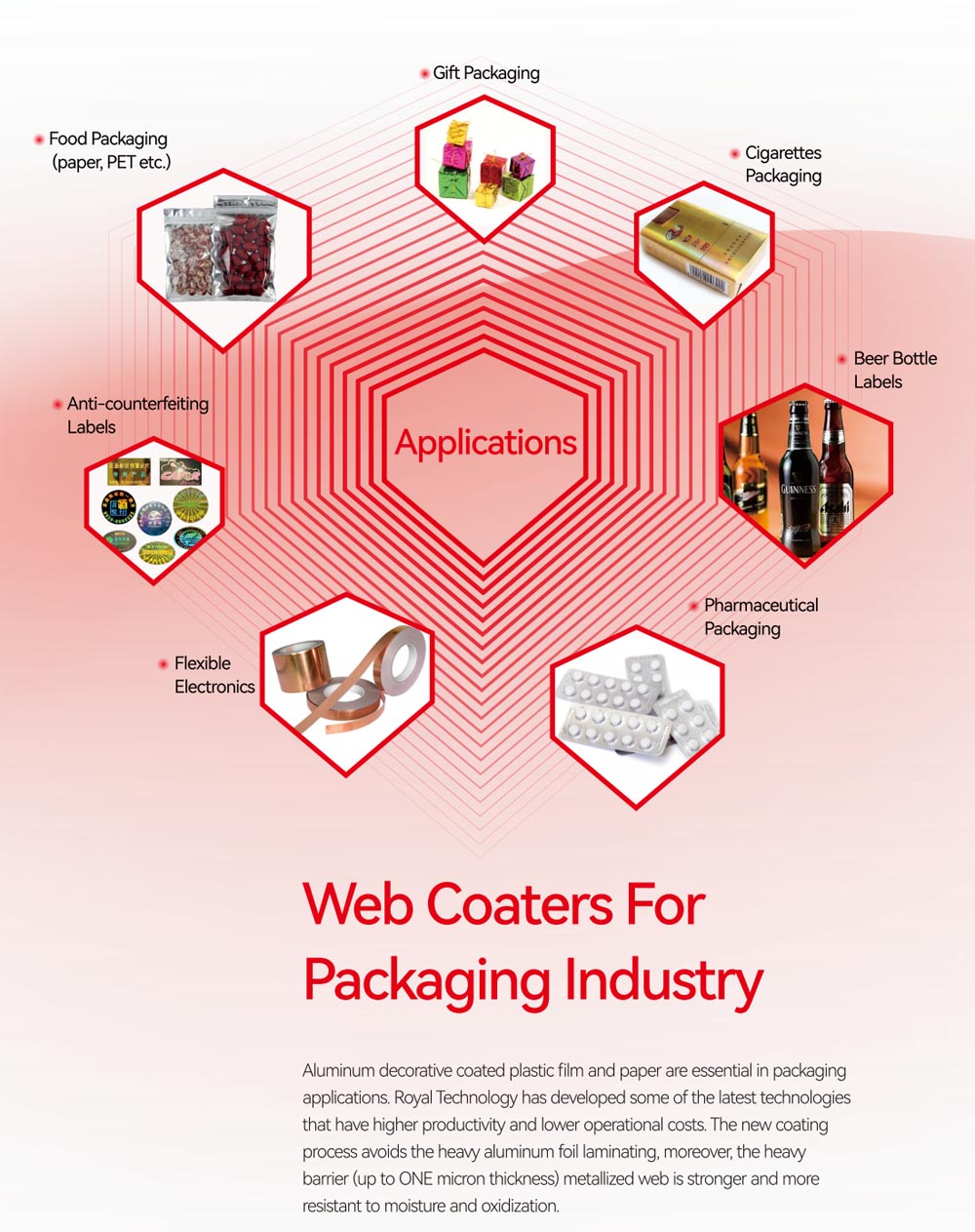
E-catalogue for online review and download.
3. Air to Air Continous magnetron sputtering system
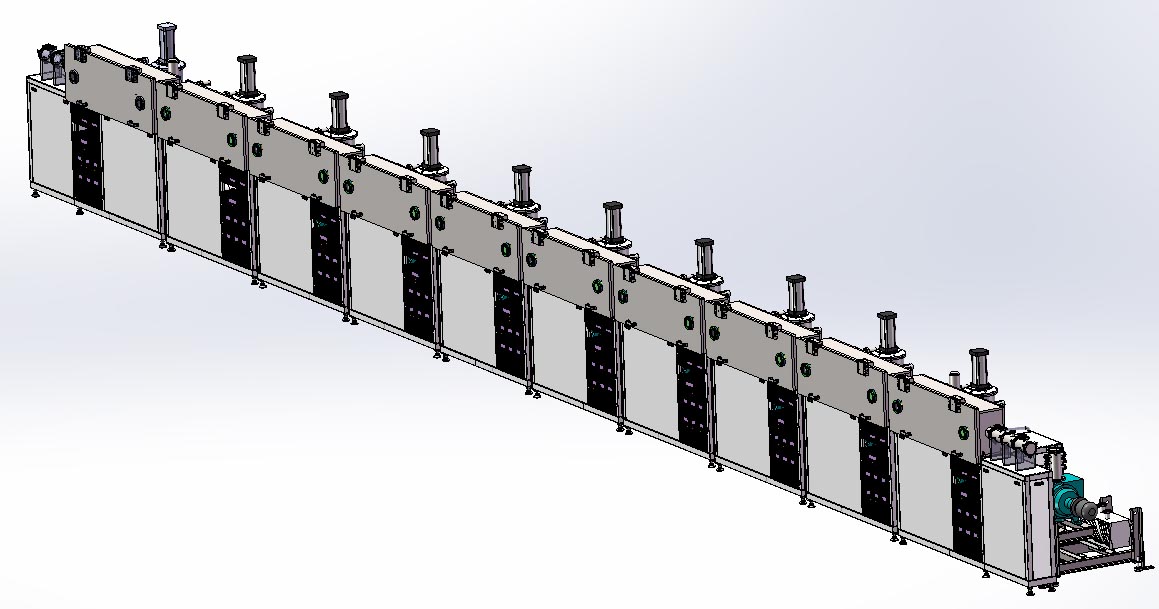
An "Air to Air continuous magnetron sputtering system" typically refers to a sputtering system that operates in a continuous manner where substrates move through the deposition chamber without exposure to the ambient atmosphere. This type of system is designed to maintain a controlled environment within the chamber, ensuring high-quality thin film deposition. Here are some key aspects related to such a system:
3.1 Features
Continuous Operation:
Substrates are continuously fed through the sputtering chamber, allowing for uninterrupted deposition without exposure to ambient air.
Controlled Environment:
The system is designed to maintain a controlled atmosphere within the chamber, typically using inert gases or a vacuum to ensure high-quality thin film deposition.
Multiple Magnetron Cathodes:
These systems often incorporate multiple magnetron cathodes to deposit different materials or create complex multilayer structures on the moving substrates.
Uniformity Control:
Methods for monitoring and controlling film properties across the entire length of the moving substrates are employed to ensure uniform coating thickness and quality.
Automation:
Automation features for substrate handling, process control, and monitoring are integrated to enhance efficiency and productivity.
High Throughput:
Air to Air continuous systems offer high throughput capabilities suitable for mass production of thin films.
3.2 Advantages
Consistent Quality:
By operating in a controlled environment, these systems ensure consistent film properties and quality throughout the production process.
High Efficiency:
Continuous processing leads to high efficiency and productivity compared to batch processing systems.
Reduced Contamination:
Minimizing exposure to ambient air helps reduce the risk of contamination and ensures high-purity thin film deposition.
Flexible
Substrate Handling: These systems can handle a variety of substrates while maintaining a controlled environment, enabling diverse applications.
Scalability: The system can be scaled up to accommodate larger substrate widths and higher production volumes.
An Air to Air continuous magnetron sputtering system is particularly well-suited for applications where a controlled atmosphere is essential for achieving high-quality thin film deposition. The continuous operation and controlled environment of these systems offer advantages in terms of efficiency, quality control, and throughput, making them valuable tools for industries that require high-volume production of thin films with consistent properties.
